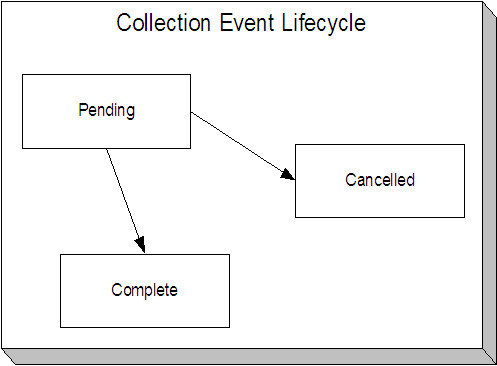Collection Event Lifecycle
The following diagram shows the possible lifecycle of a collection event:

Collection events are initially created in the pending state.
When the system sees a pending event with a trigger date on or before the current date, the system executes the event's activity and completes the event.
For more information about a collection event's trigger date, see Collection Event Trigger Date.
A pending event will be cancelled automatically by the system when the account's debt no longer violates the collection criteria that sparked the event's collection process. A pending event may also be cancelled by a user at their discretion. Refer to How Are Collection Processes Cancelled for more information about how the system will cancel a collection process (and its events).
